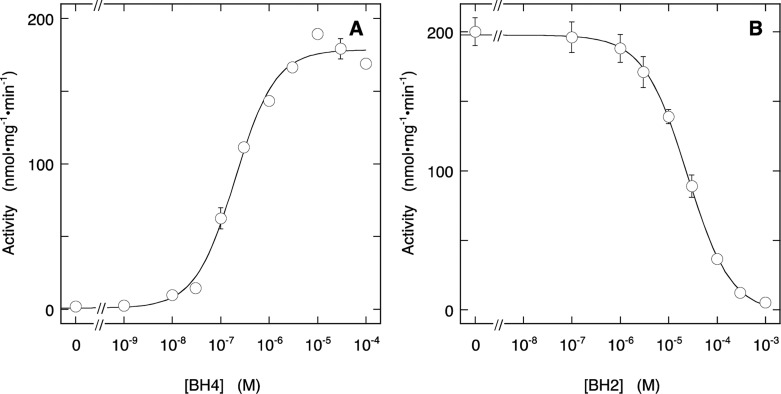Figure 2.
Effect of BH4 (A) and BH2 (B) on NO production by ECo-nNOS. Panel A shows the stimulation by BH4 of NO formation, measured with the oxyHb assay. The curve through the data is the best fit to the Hill equation with fitting parameters EC50 = (2.0 ± 0.3) × 10–7 M, Act0 = 1 ± 5 nmol·mg–1·min–1, Act∞ = 178 ± 5 nmol·mg–1·min–1, h = 1.05 ± 0.15. Panel B shows the inhibition by BH2 in the presence of 10 μM BH4. The curve through the data is the best fit to the Hill equation with fitting parameters IC50 = (2.42 ± 0.13) × 10–5 M, Act0 = 197.6 ± 1.6 nmol·mg–1·min–1, Act∞ = −2 ± 3 nmol·mg–1·min–1, h = 0.96 ± 0.04. Experimental conditions: 2 μg/mL (∼11 nM) ECo-nNOS, 0.2 mM Arg, 0.2 mM NADPH, 5 μM FAD, 5 μM FMN, 10 μg/mL CaM, 0.5 mM CaCl2, 5 μM oxyHb, 1000 U/mL SOD, 50 mU/mL CAT, 0.2 mM CHAPS, 0.1 mM EDTA, 50 mM TEA (pH 7.4), and pteridines as indicated at 37 °C. Data points are presented ± SEM (n = 3).

